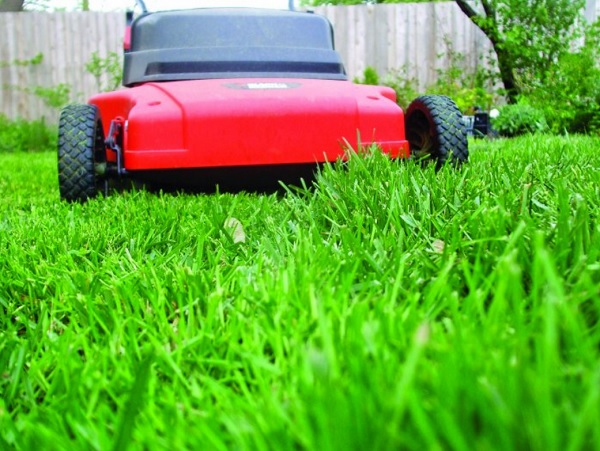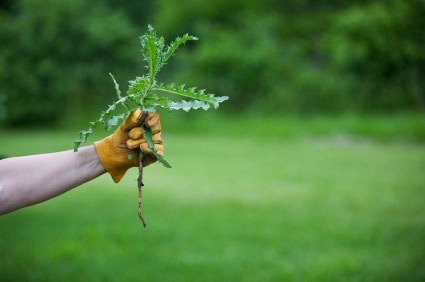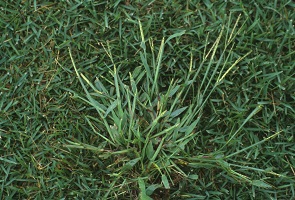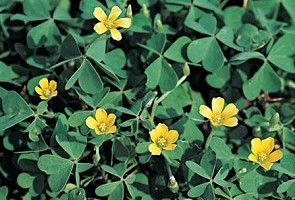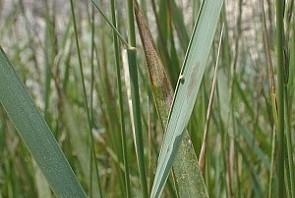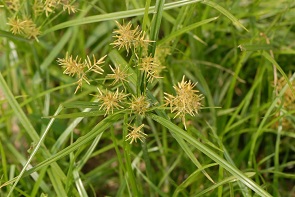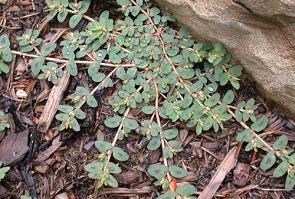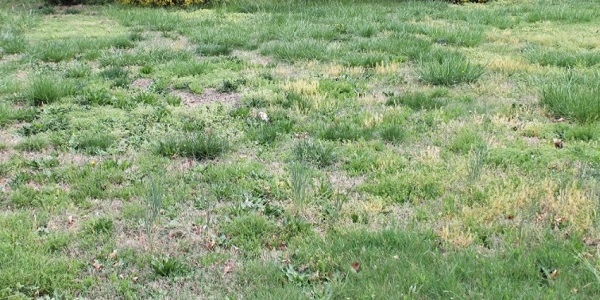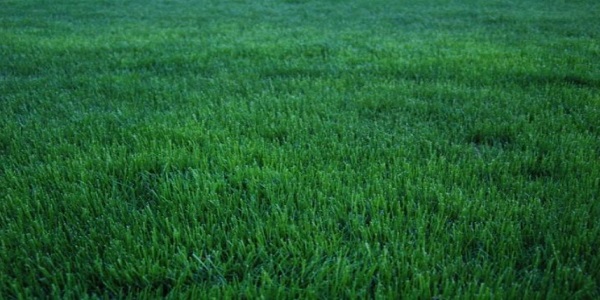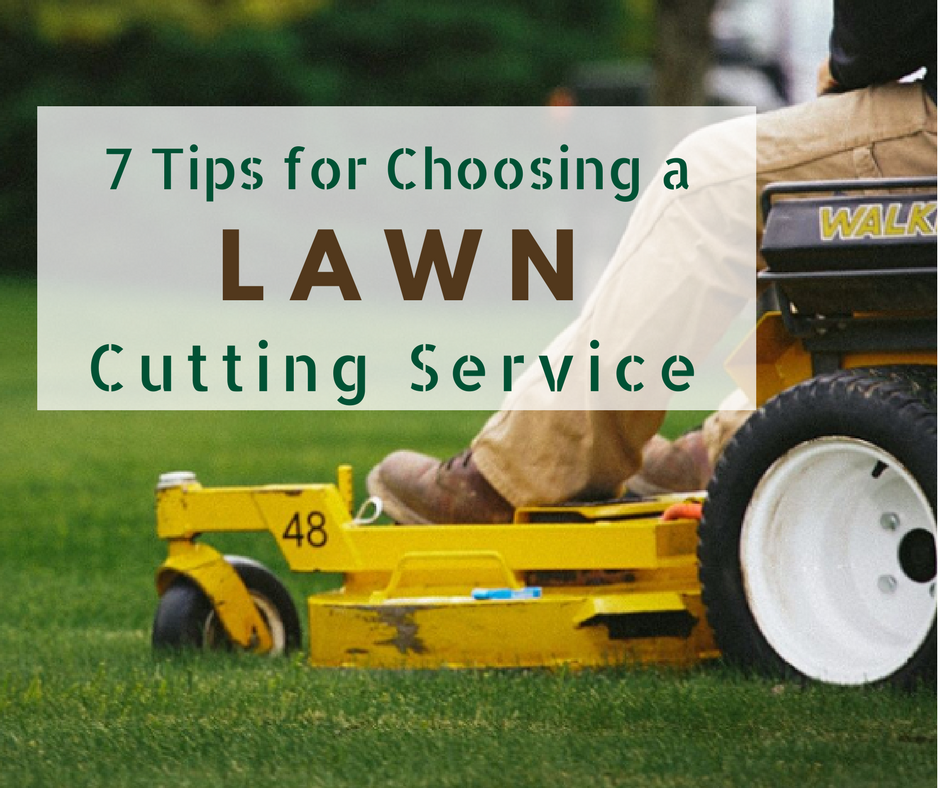How to Free Your Lawn of Weeds
For many people, the thought of a perfect, weed-free lawn brings to mind an image of a championship golf course.
It does in mine!!!
I guess because a nearly weed-free lawn is like the stuff of dreams.
When you think about the tenacity of weeds and the limitations for using chemicals, it’s a wonder anyone can win the war against these pesky invaders.
Did you know that just a single dandelion plant will make up to 15,000 seeds – each of which can survive for 6 years in the soil?
Consider that those same seeds can each create a new plant that will grow to create 15,000 more seeds once it sprouts and matures.
For years and years, synthetic herbicides were the first and most usual way to diffuse chronic weed problems. But when not used correctly, certain chemical weed killers can be dangerous to people, pets and even the turf.
Also – if you don’t bother to get at the true underlying problem(s) that are weakening your lawn and making it easier for weeds to invade – you might have to apply chemical herbicides quite frequently.
The best way to control dandelions and other weeds in your yard is to grow and maintain a thick, vigorous lawn.
The more dense your grass is, the more it is able to crowd out weeds.
Denser lawns will also block the sunlight from getting to the weed seeds which they need to germinate.
If only a few weeds dot your lawn, changing your maintenance tactics might be all it takes to get rid of them. And if your efforts at hand-to-hand combat haven’t worked, take heart. There really is a way to pull out even stubborn dandelions so they don’t come back.
PLAN YOUR APPROACH
No single herbicide, weeding technique or lawn care tactic works against all weeds. How you attack the weeds in your lawn depends on which you have. Lawn weeds fall under three broad categories: unwanted grasses; grass-like plants called sedges; and broad leaf plants. Most are annuals or perennials. Annuals complete their life cycle in one season and reproduce from seeds. Perennials live several years and spread underground as well as by seed, making them harder to control.The following guide shows examples of the different types of weeds that plague lawns throughout the country. If you’re still stumped about whether yellow nutsedge or yellow woodsorrel has invaded your turf, call the extension service in your area for help from experts.
CROWDING OUT WEEDS
Most lawn weeds are opportunists that take root wherever they can find the space and catch a few rays of sunlight. These interlopers stand little chance of establishing themselves in healthy grass. That’s why a sensible lawn care plan will help stop weed problems before they have a chance to start.Fertilize enough, but not too much. Too little fertilizer can lead to sparse lawn that loses the competition with weeds. Too much helps nurture certain weeds, notably annual bluegrass, Bermuda grass and crabgrass. Strike a balance by following the application rates on the package. And use a fertilizer with a high percentage of controlled-release nitrogen, such as sulfur-coated urea, ureaform or IBDU. These provide a slow, steady nutrient supply.The frequency and timing of your fertilizing efforts are also crucial to healthy lawns. Both vary depending on your lawn type and the length of your growing season. Most northern lawns need only one or two applications of fertilizer annually—once in fall and sometimes a second time in spring. Southern grasses might require three feedings—early to midspring just after the grass greens up, early summer and again in early fall.Water grass infrequently and deeply. Frequent, light watering causes shallow roots and helps annual bluegrass, crabgrass, chickweed, sedges and other weed seeds germinate. If you water too little, the lawn suffers while spotted spurge, Bermuda grass, quackgrass and other weeds adapted to drier soil thrive. Instead, provide your lawn with infrequent, deep soakings. Lawns need about 1 inch of water per week. Set an empty tuna can on the lawn to determine when you have applied 1 inch of water.Mow higher. Mowing too low weakens turf by reducing the ability of a grass leaf to produce enough nutrients. It also lets light hit the soil surface, which helps crabgrass and goosegrass seeds sprout and grow. Check with your local extension service for the recommended range of mowing heights for your grass type. Then mow at the highest level—usually between 2 and 4 inches.
Learn to read weeds. Sometimes weeds are a clue to soil or site problems. Correct them so your landscape favors lawn grasses and discourages weeds. For example, ground ivy grows best where the soil surface remains damp. It also thrives in areas too shady for good grass growth. So consider improving soil drainage by aerating—removing small cores of soil—if ground ivy is a problem. And, to allow more light to reach the surface of the soil, selectively remove tree branches in shady areas
HAND-WEEDING
Growing a healthy lawn with proper mowing and watering can keep weeds from sprouting. Here’s how to go after the weeds you have:
Hand-weeding is still the best defense on small lawns where the number of weeds isn’t overwhelming. It’s most effective against annual broad-leaf weeds. Pulling them while they’re young—before they flower and seed—is the simplest way to prevent them from spreading.
Catching perennial weeds early is crucial. Dandelions, for example, develop deep taproots that are hard to pull once they mature. Yank the entire plant, including the root—any root pieces left underground will grow new plants. If new sprouts grow, pull them repeatedly to eventually starve and kill the weed.
Weeding is easiest when the soil is moist. Tools like the dandelion digger help get at the root by probing deep into the soil. Once the weed is out, promptly reseed the bare spot; otherwise, new weeds will fill it in.
PULLING WEEDS PERMANENTLY
Perennial weeds such as dandelions should be pulled when they are young. When soil is moist, push a sharp spade or dandelion digger into the soil, angled downward toward the center of the plant, and loosen the soil around it. Use the tool to pry the weed upward while pulling it; try not to break off the roots. Once the weed and roots are out, smooth the soil, work in some compost, and patch the area with lawn seed. Keep the soil evenly moist until the grass is 1 inch high.
HERBICIDES
Use herbicides as a last resort—when nothing else works on a particular weed or when your lawn is completely overrun. And follow directions carefully. Used incorrectly, herbicides can injure or kill turf and other desirable plants.
If you use an herbicide, choose one that’s labeled as safe for the type of turf you’re growing and effective against the weeds you’ve got. The label states when and in which conditions to use the product. Some herbicides work only within a certain temperature range; others work only when applied at a specific time of year.
Herbicides fall into three major categories:
Preemergence herbicides kill germinating seeds before seedlings break through the soil. Crabgrass is the primary target. The most common preemergence herbicides are synthetic. Natural, nontoxic preemergence herbicides made from corn gluten are safer, though you might have to apply them for several seasons for them to be fully effective. Three quality products are Concern Weed Prevention Plus, WOW! and WeedzSTOP. A drawback to these and most other preemergence herbicides is that they kill germinating lawn seed. Check product labels carefully.
Postemergence herbicides kill existing weeds that are actively growing. These come in two basic forms: contact and systemic. Contact herbicides kill only the part of the plant they touch. Most act quickly and work best against annual weeds. Systemic herbicides circulate inside the plant, killing the whole thing. They’re more effective than contact herbicides on perennial weeds, though repeat treatments might be needed.
You also need to choose between selective and nonselective versions of systemic herbicides. Selective herbicides kill only certain weeds, while nonselective herbicides kill any green, growing plant, whether it’s a weed or not. Most broad-leaf herbicides, including products like Weed-Away and Weed Warrior, are systemic and selective to kill broadleaf weeds only. They won’t kill weedy grasses. Glyphosate—the active ingredient in Roundup and other products—is an example of a systemic, nonselective herbicide that kills broadleaf weeds and weedy grasses. But because it also kills turf and other desirable plants, it’s safest to use it on your lawn when you want to kill an entire section and then replant it. Finale, in which the active ingredient is gluphosinate ammonium, is another nonselective used for this purpose.
When using any postemergence herbicide, don’t apply them over your entire lawn, if possible. Instead, spot-treat isolated weeds or weedy patches.
Weed-and-feed products combine fertilizer and herbicides to do two jobs at once. But their promised labor savings can backfire if the recommended time for weed control doesn’t coincide with the best time and rates for fertilizing. Most also pose an herbicide-overdose risk when used for follow-up fertilizing. WOW Plus!, corn gluten with added organic fertilizer, is the safest weed-and-feed.
Whichever herbicide you use, follow the directions. Address the causes of weeds at the same time to keep new ones from growing. And reseed the bare spots left by dead weeds. The bottom line in the war against weeds: Care for your lawn and apply only what it needs—and only when necessary.

